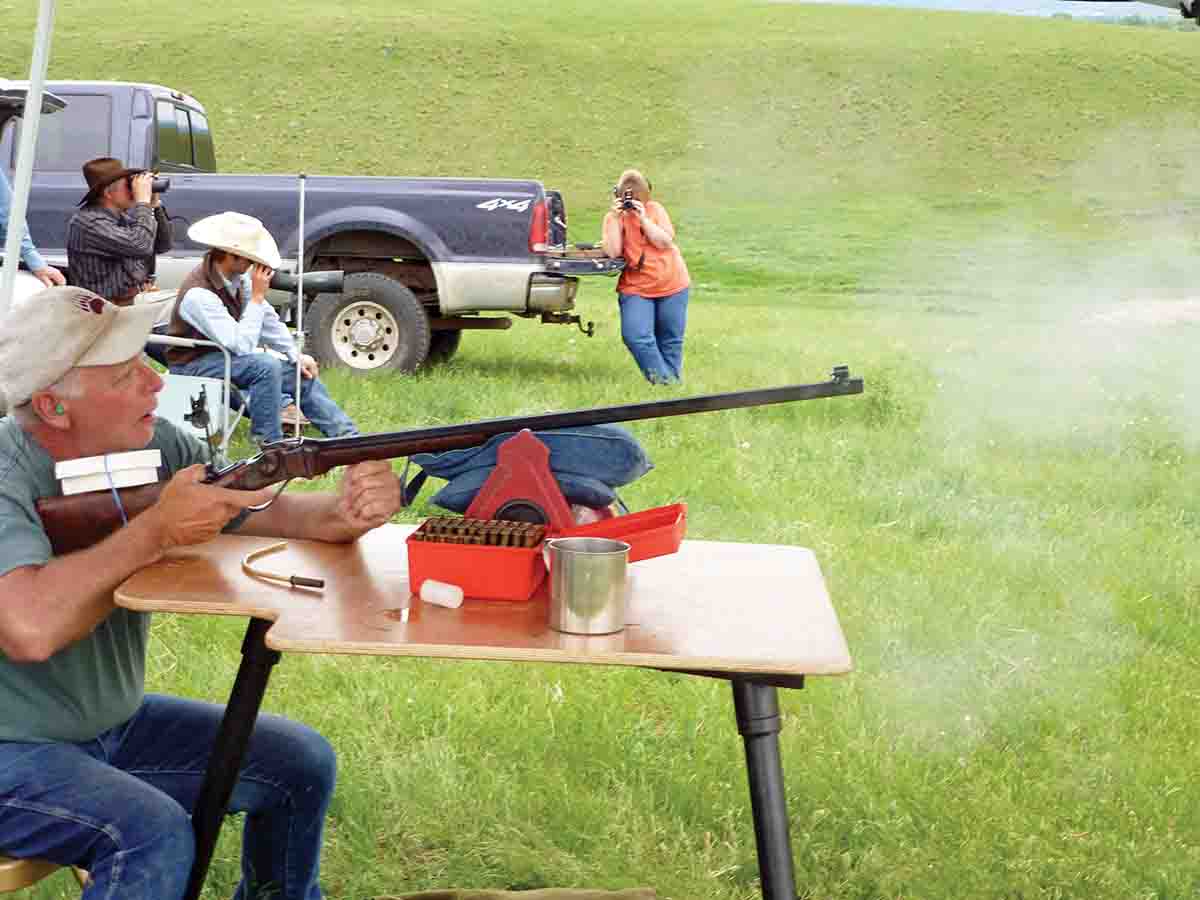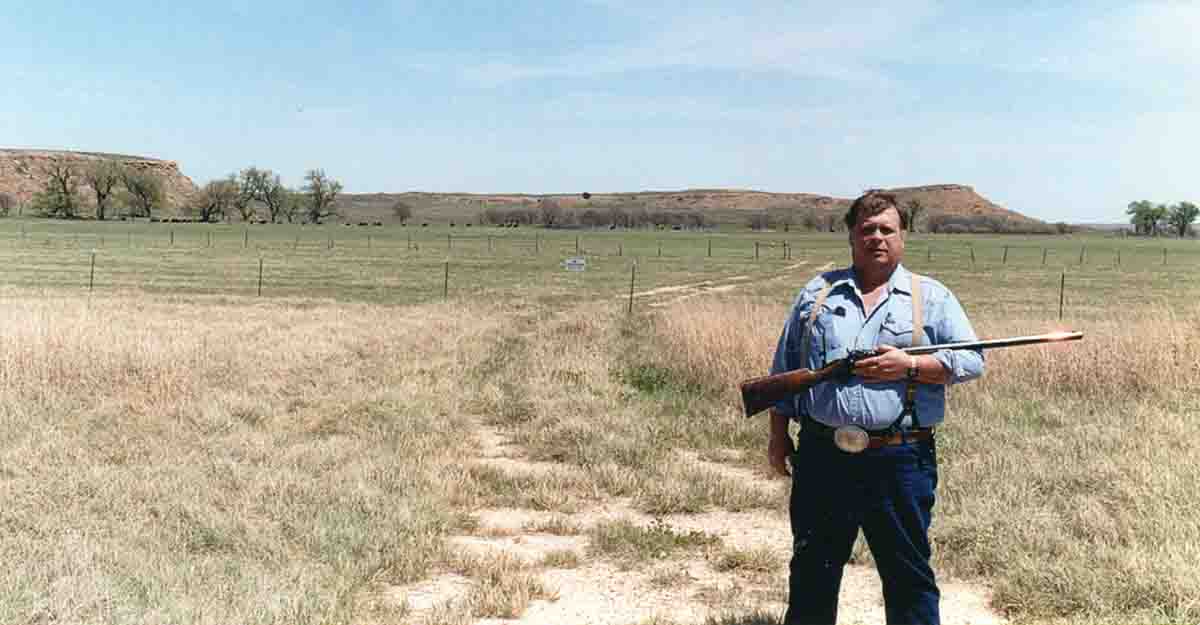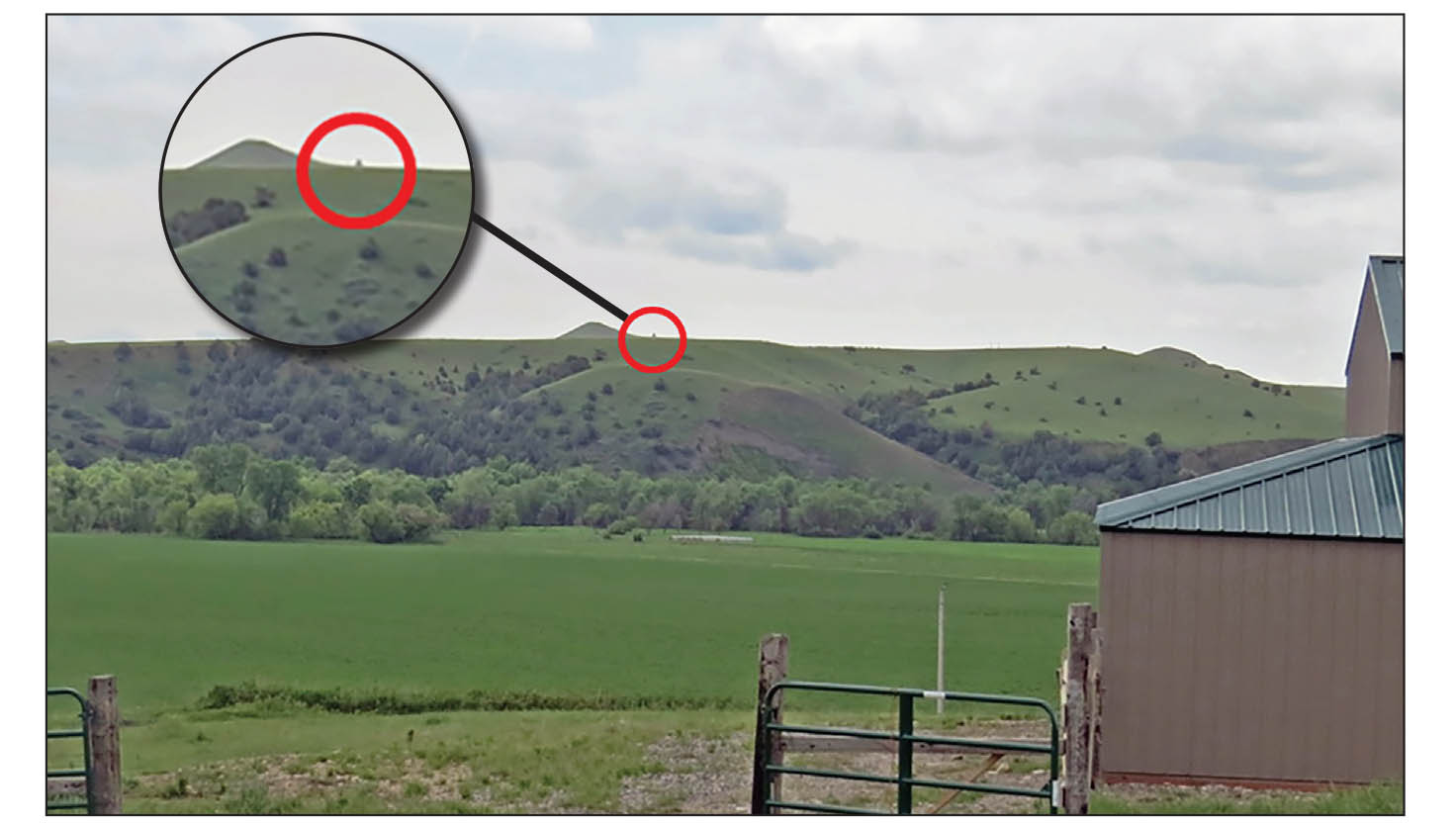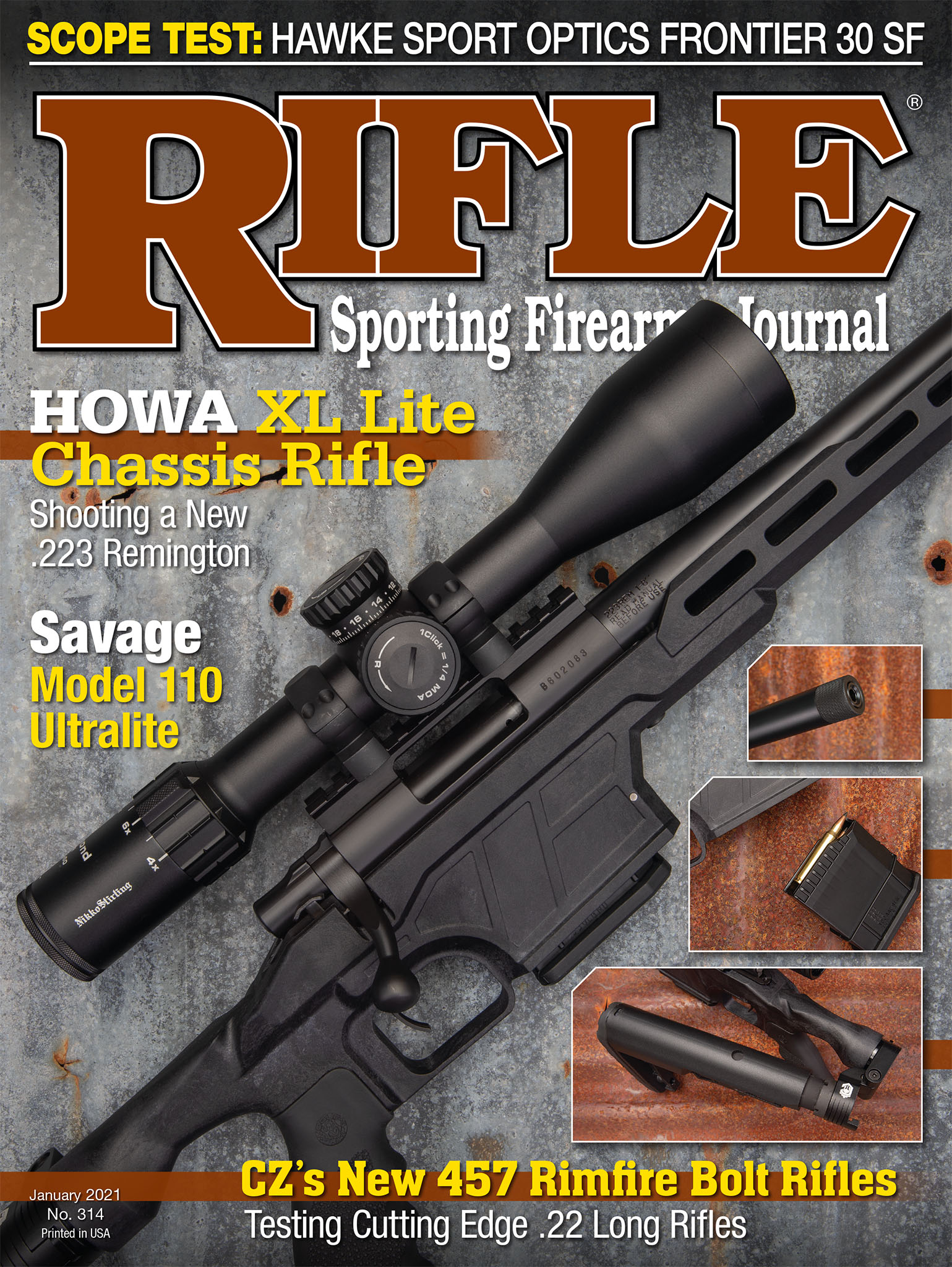Down Range
Incredibly Long Shots
column By: Mike Venturino | January, 21

In the book, it is stated that a few days after the battle a group of Native Americans appeared on a mesa over 1,500 yards away. Resting a borrowed .50-90 Sharps over a window frame, Dixon was said to have knocked one off his horse.

When writing my book Shooting Buffalo Rifles of the Old West, with the help of my good friend, Bob Glodt of Plainview, Texas, I visited the site of Adobe Walls. It had markers about the fight, and even Billy Dixon’s grave is there. Did Dixon actually make that incredible shot? The only record of it is in his wife’s book, and no battle participants mentioned it in their oral histories. Could he have made the shot?
That such a shot was possible was proven by some testing done at the Yuma Proving Grounds in 1992. Long story short, I was there, along with the owners of Shiloh Rifle Manufacturing with several of their Sharps rifle recreations. The scientists tracked bullets on radar as fired from a mechanical cradle. With the rifle slanted to 29 degrees elevation, .50-90 bullets passed 4,000 yards.

As for the Jack Bean shot, I was more involved in an attempted recreation. Some years back, I was approached by a friend whose former U.S. Army Commanding Officer, Col. French L. MacLean (retired), was writing a book about the 1874 Montana expedition. In thoroughly researching the entire journey, Col. MacLean determined that the night before the expedition started, all the wagons, mules, horses and participants staged on what is now my Montana property. MacLean and I became friends and have stayed in touch. His book titled Sitting Bull, Crazy Horse, Gold and Guns, was published in 2016. It is a wealth of information not only about the 1874 expedition, but it also gives much insight to Montana history of that time frame.
In June 2015, Col. MacLean arranged an attempt to recreate Jack Bean’s shot. The Colonel, Hank Adams, Rich Morris and I met at the Lodge Grass Creek site. It’s a privately-owned ranch on which we were permitted to try such a long shot. After studying the terrain, our best guess was that the high bluff and the expedition’s campsite were 1,510 yards apart. Some evidence that the supposed campsite location was spot-on was found the evening before our attempted recreation. Adams and Morris did some metal detecting around where we would set up the next morning and recovered some fired .44 Henry cartridge cases and a few deformed lead slugs.
Again I’ll make a long story short. For a target on the “Indians’ bluff” two 4x8 sheets of white painted plywood were erected. One was set horizontally, and in the middle of it another was set vertically. From 1,510 yards they appeared as a mere white speck. I brought along several original and recreation Sharps rifles and plenty of ammunition. To simplify matters, we only used .45-70s because I have developed match grade handloads for that cartridge. I even borrowed a tang sight from Montana Vintage Arms that is billed as its Mile-High version.
Col. MacLean’s research determined that Jack Bean could have been using a Sharps .44-90 or .44-77. Most probably it was the latter round, as .44-90s had only been introduced a few months previously. My .45-70 loads carried 500- to 550-grain bullets with enough Swiss FFFg black powder to push them to 1,250/1,300 fps.
The morning of our shoot on Lodge Grass Creek started with no wind with some mild shifting tailwind developing later in the day. Several local residents also arrived with their Sharps replicas in .45-70 and .45-90 chamberings. There was a radio-equipped volunteer stationed in a gully a safe distance from the target. A total of 76 rounds were fired. One young man, shooting one of my rifles, hit the plywood with a bounced bullet and another gent lodged a bullet in the plywood, but whether it was a solid or bounced hit was undetermined.
What I do know is that if either Billy Dixon or Jack Bean actually hit a warrior with their Sharps rifles, it was either their luckiest day or the warrior’s unluckiest day.


